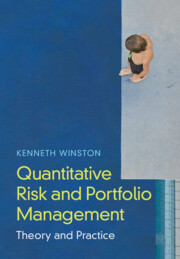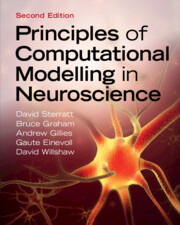Refine search
Actions for selected content:
36846 results in Cambridge Textbooks
About the Authors
-
- Book:
- Introduction to Applied Geophysics
- Published online:
- 12 October 2023
- Print publication:
- 12 October 2023, pp vi-vi
-
- Chapter
- Export citation
Preface
-
- Book:
- Introduction to Applied Geophysics
- Published online:
- 12 October 2023
- Print publication:
- 12 October 2023, pp xix-xxi
-
- Chapter
- Export citation

Introduction to Quantum Cryptography
-
- Published online:
- 10 October 2023
- Print publication:
- 14 September 2023
-
- Textbook
- Export citation

Quantitative Risk and Portfolio Management
- Theory and Practice
-
- Published online:
- 10 October 2023
- Print publication:
- 21 September 2023
-
- Textbook
- Export citation

An Introduction to Buddhist Philosophy
-
- Published online:
- 07 October 2023
- Print publication:
- 12 October 2023
-
- Textbook
- Export citation

Principles of Computational Modelling in Neuroscience
-
- Published online:
- 07 October 2023
- Print publication:
- 05 October 2023
-
- Textbook
- Export citation

Quantum Theory
- A Foundational Approach
-
- Published online:
- 06 October 2023
- Print publication:
- 31 August 2023
-
- Textbook
- Export citation

Introduction to Electrodynamics
-
- Published online:
- 06 October 2023
- Print publication:
- 02 November 2023
-
- Textbook
- Export citation
Copyright page
-
- Book:
- Principles of Computational Modelling in Neuroscience
- Published online:
- 07 October 2023
- Print publication:
- 05 October 2023, pp iv-iv
-
- Chapter
- Export citation
Chapter 6 - Intracellular Mechanisms
-
- Book:
- Principles of Computational Modelling in Neuroscience
- Published online:
- 07 October 2023
- Print publication:
- 05 October 2023, pp 145-184
-
- Chapter
- Export citation
References
-
- Book:
- Principles of Computational Modelling in Neuroscience
- Published online:
- 07 October 2023
- Print publication:
- 05 October 2023, pp 472-523
-
- Chapter
- Export citation
Chapter 2 - The Basis of Electrical Activity in the Neuron
-
- Book:
- Principles of Computational Modelling in Neuroscience
- Published online:
- 07 October 2023
- Print publication:
- 05 October 2023, pp 12-39
-
- Chapter
- Export citation
Chapter 12 - Development of the Nervous System
-
- Book:
- Principles of Computational Modelling in Neuroscience
- Published online:
- 07 October 2023
- Print publication:
- 05 October 2023, pp 338-384
-
- Chapter
- Export citation
Chapter 9 - Networks of Neurons
-
- Book:
- Principles of Computational Modelling in Neuroscience
- Published online:
- 07 October 2023
- Print publication:
- 05 October 2023, pp 245-272
-
- Chapter
- Export citation
Chapter 7 - The Synapse
-
- Book:
- Principles of Computational Modelling in Neuroscience
- Published online:
- 07 October 2023
- Print publication:
- 05 October 2023, pp 185-209
-
- Chapter
- Export citation
Abbreviations
-
- Book:
- Principles of Computational Modelling in Neuroscience
- Published online:
- 07 October 2023
- Print publication:
- 05 October 2023, pp xii-xvi
-
- Chapter
- Export citation
Chapter 14 - Model Selection and Optimisation
-
- Book:
- Principles of Computational Modelling in Neuroscience
- Published online:
- 07 October 2023
- Print publication:
- 05 October 2023, pp 431-465
-
- Chapter
- Export citation
Preface
-
- Book:
- Principles of Computational Modelling in Neuroscience
- Published online:
- 07 October 2023
- Print publication:
- 05 October 2023, pp ix-x
-
- Chapter
- Export citation
Chapter 10 - Brain Tissue
-
- Book:
- Principles of Computational Modelling in Neuroscience
- Published online:
- 07 October 2023
- Print publication:
- 05 October 2023, pp 273-301
-
- Chapter
- Export citation
Index
-
- Book:
- Principles of Computational Modelling in Neuroscience
- Published online:
- 07 October 2023
- Print publication:
- 05 October 2023, pp 524-535
-
- Chapter
- Export citation
